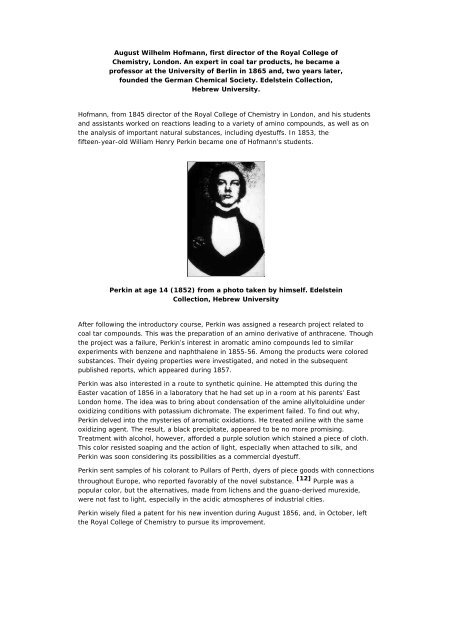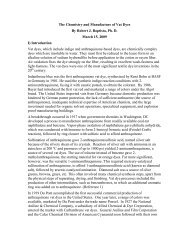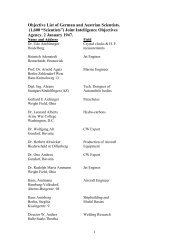International Dyestuff Industry - ColorantsHistory.Org
International Dyestuff Industry - ColorantsHistory.Org
International Dyestuff Industry - ColorantsHistory.Org
You also want an ePaper? Increase the reach of your titles
YUMPU automatically turns print PDFs into web optimized ePapers that Google loves.
August Wilhelm Hofmann, first director of the Royal College of<br />
Chemistry, London. An expert in coal tar products, he became a<br />
professor at the University of Berlin in 1865 and, two years later,<br />
founded the German Chemical Society. Edelstein Collection,<br />
Hebrew University.<br />
Hofmann, from 1845 director of the Royal College of Chemistry in London, and his students<br />
and assistants worked on reactions leading to a variety of amino compounds, as well as on<br />
the analysis of important natural substances, including dyestuffs. In 1853, the<br />
fifteen-year-old William Henry Perkin became one of Hofmann’s students.<br />
Perkin at age 14 (1852) from a photo taken by himself. Edelstein<br />
Collection, Hebrew University<br />
After following the introductory course, Perkin was assigned a research project related to<br />
coal tar compounds. This was the preparation of an amino derivative of anthracene. Though<br />
the project was a failure, Perkin’s interest in aromatic amino compounds led to similar<br />
experiments with benzene and naphthalene in 1855-56. Among the products were colored<br />
substances. Their dyeing properties were investigated, and noted in the subsequent<br />
published reports, which appeared during 1857.<br />
Perkin was also interested in a route to synthetic quinine. He attempted this during the<br />
Easter vacation of 1856 in a laboratory that he had set up in a room at his parents’ East<br />
London home. The idea was to bring about condensation of the amine allyltoluidine under<br />
oxidizing conditions with potassium dichromate. The experiment failed. To find out why,<br />
Perkin delved into the mysteries of aromatic oxidations. He treated aniline with the same<br />
oxidizing agent. The result, a black precipitate, appeared to be no more promising.<br />
Treatment with alcohol, however, afforded a purple solution which stained a piece of cloth.<br />
This color resisted soaping and the action of light, especially when attached to silk, and<br />
Perkin was soon considering its possibilities as a commercial dyestuff.<br />
Perkin sent samples of his colorant to Pullars of Perth, dyers of piece goods with connections<br />
throughout Europe, who reported favorably of the novel substance. [12] Purple was a<br />
popular color, but the alternatives, made from lichens and the guano-derived murexide,<br />
were not fast to light, especially in the acidic atmospheres of industrial cities.<br />
Perkin wisely filed a patent for his new invention during August 1856, and, in October, left<br />
the Royal College of Chemistry to pursue its improvement.





